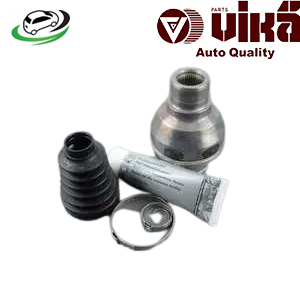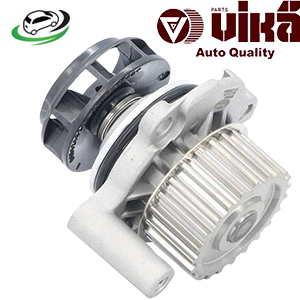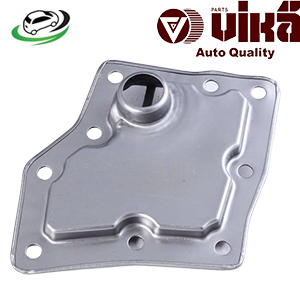-8%
Get VW Lupo I (6X1 6E1)/ Polo (6N2)/ Polo (9N 9A)/ Polo IV Saloon (9A4 9A2 9N2 9A6) Automatic Transmission Hydraulic Filter 001325429A
The automatic transmission is one of the most complex and essential components of modern vehicles, responsible for smoothly shifting gears and ensuring optimal engine performance. Within this system, the automatic transmission hydraulic filter plays a crucial role in maintaining transmission fluid cleanliness, protecting sensitive components from wear, and ensuring smooth operation. Over time, as contaminants build up in the fluid, the hydraulic filter becomes vital in preventing damage to the transmission system.
In this detailed guide, we’ll explore the functions, benefits, signs of failure, and maintenance tips for the automatic transmission hydraulic filter. Understanding this essential component will not only improve the longevity of your vehicle’s transmission but also enhance overall driving performance.
1. What Is an Automatic Transmission Hydraulic Filter?
The automatic transmission hydraulic filter is a component within the transmission system that cleans and filters the transmission fluid as it circulates through the system. The filter removes contaminants such as metal shavings, debris, dirt, and clutch material, ensuring the transmission fluid remains clean. Clean fluid is crucial for the smooth operation of the transmission as it lubricates moving parts, cools the transmission, and provides hydraulic pressure for gear changes.
In most automatic transmissions, the hydraulic filter is located in the transmission pan or within the hydraulic control unit. It works continuously as the vehicle operates, ensuring that the transmission fluid remains uncontaminated and provides the necessary protection to the transmission components.
2. Components of an Automatic Transmission Hydraulic Filter
A typical automatic transmission hydraulic filter consists of several components that work together to remove impurities from the transmission fluid. These components include:
- Filter Media: The filter media is the heart of the hydraulic filter. It’s usually made from cellulose, synthetic fibers, or a combination of both. The media traps and holds contaminants, preventing them from circulating through the transmission.
- Housing: The filter housing encloses the filter media, providing structural support and ensuring that the filter remains in place. It is typically made from plastic or metal, depending on the design of the filter.
- Gasket or Seal: The filter includes a gasket or seal that prevents transmission fluid from bypassing the filter. A secure seal ensures that all fluid is properly filtered before it enters the transmission.
- Filter Screen: In some hydraulic filters, a screen is used in addition to the filter media. This screen catches larger particles before they reach the finer filter media, enhancing the filter’s efficiency and lifespan.
3. How the Automatic Transmission Hydraulic Filter Works
The automatic transmission hydraulic filter operates within the transmission’s fluid circulation system. When the engine is running, transmission fluid circulates through the transmission, carrying contaminants with it. As the fluid passes through the hydraulic filter, the contaminants are trapped within the filter media, allowing only clean fluid to continue circulating.
This process occurs continuously as long as the vehicle is in operation. The filtered fluid then moves on to lubricate and cool the various parts of the transmission, including the gears, clutches, and hydraulic control systems. Clean transmission fluid is essential for ensuring the longevity of the transmission, as it minimizes wear and tear, prevents overheating, and provides the necessary hydraulic pressure for smooth gear shifts.
4. Importance of the Automatic Transmission Hydraulic Filter
The hydraulic filter is essential for maintaining the overall health and performance of an automatic transmission. Here’s why it’s so important:
A. Protecting Transmission Components
Transmission fluid can pick up contaminants as it flows through the system. Metal shavings from gears, clutch material, dirt, and other debris can enter the fluid, potentially damaging sensitive components within the transmission. The hydraulic filter prevents these contaminants from circulating through the system, protecting gears, clutches, and valves from wear and tear.
B. Ensuring Smooth Gear Shifts
Automatic transmissions rely on clean, pressurized fluid to function properly. If the fluid becomes contaminated or clogged, the transmission may struggle to shift gears smoothly. The hydraulic filter ensures that clean fluid reaches the transmission’s hydraulic control system, allowing for smooth and precise gear shifts.
C. Extending Transmission Lifespan
A well-functioning hydraulic filter helps extend the lifespan of the transmission by reducing the buildup of harmful contaminants. By keeping the fluid clean, the filter minimizes the risk of internal damage and reduces the likelihood of costly repairs.
D. Preventing Overheating
Transmission fluid also acts as a coolant, helping to dissipate heat generated by the transmission. A clogged or dirty hydraulic filter can restrict fluid flow, leading to overheating. Clean transmission fluid, maintained by the filter, ensures proper cooling and prevents the transmission from overheating.
5. Signs of a Failing Transmission Hydraulic Filter
Like any other automotive component, the transmission hydraulic filter can become worn or clogged over time. Recognizing the signs of a failing filter is crucial for preventing transmission damage. Here are some common symptoms of a failing or clogged hydraulic filter:
A. Slipping Gears
If the transmission struggles to shift between gears or slips out of gear, it could indicate a problem with the hydraulic filter. Contaminated or restricted fluid flow may prevent the transmission from maintaining proper hydraulic pressure, causing gear slipping or hesitation.
B. Delayed or Harsh Shifting
When the transmission filter is clogged, the fluid may not reach the transmission’s hydraulic control system as quickly or effectively. This can lead to delayed or harsh shifting, where the vehicle struggles to engage gears smoothly.
C. Overheating Transmission
A clogged hydraulic filter can restrict the flow of transmission fluid, leading to overheating. If the transmission is overheating, it may trigger warning lights on the dashboard or produce a burning smell. Overheating can cause significant damage to the transmission if not addressed promptly.
D. Transmission Fluid Leaks
A clogged or failing filter can cause pressure to build up within the transmission, leading to fluid leaks. Transmission fluid leaks are typically noticeable as red or brown fluid pooling underneath the vehicle.
E. Unusual Noises
If you hear whining, grinding, or clunking noises from the transmission, it could be a sign of a restricted fluid flow due to a clogged filter. Unusual noises often indicate that the transmission is not receiving adequate lubrication, leading to increased friction and wear.
6. Maintenance of the Automatic Transmission Hydraulic Filter
Maintaining the automatic transmission hydraulic filter is essential for ensuring the smooth operation and longevity of the transmission. Here are some key maintenance tips:
A. Regular Fluid and Filter Changes
The most important maintenance task is to change the transmission fluid and filter at regular intervals, as specified by the vehicle manufacturer. Depending on the make and model, fluid and filter changes may be recommended every 30,000 to 60,000 miles. Regular changes ensure that the transmission fluid remains clean and that the filter can continue to do its job effectively.
B. Checking Transmission Fluid Levels
Regularly checking the transmission fluid levels can help you catch issues early. Low fluid levels can indicate a leak, while dirty or discolored fluid may suggest that the filter is clogged or the fluid needs to be changed. Clean, properly filled transmission fluid is essential for maintaining transmission performance.
C. Addressing Warning Lights
Many modern vehicles are equipped with sensors that monitor the transmission system. If the transmission warning light comes on, it’s important to have the system checked by a professional. Ignoring warning lights can lead to more serious transmission problems down the line.
D. Avoiding Overloading the Vehicle
Overloading a vehicle can put additional strain on the transmission system, causing it to overheat or wear out prematurely. To protect the transmission and hydraulic filter, avoid exceeding the vehicle’s recommended towing or payload capacity.
E. Transmission Fluid Flushes
In addition to regular fluid and filter changes, some manufacturers recommend periodic transmission fluid flushes. A flush can help remove any built-up contaminants or sludge within the transmission system, providing a clean slate for the new fluid and filter.
7. When to Replace the Hydraulic Filter
Knowing when to replace the hydraulic filter is crucial for keeping the transmission running smoothly. Here are some guidelines:
A. Follow Manufacturer’s Recommendations
Always follow the manufacturer’s recommended service intervals for transmission fluid and filter changes. These intervals are designed to keep the transmission in peak condition and prevent premature wear.
B. Replace During Transmission Service
It’s common to replace the hydraulic filter during routine transmission service. If the fluid is being changed, it’s a good idea to replace the filter at the same time to ensure that the entire system is clean and free of contaminants.
C. Signs of Clogged Filter
If you notice any of the symptoms of a clogged or failing filter—such as slipping gears, overheating, or delayed shifting—it’s important to have the filter inspected and replaced if necessary. Prompt attention to these issues can prevent more serious transmission damage.
8. Conclusion
The automatic transmission hydraulic filter is a vital component in the smooth operation and longevity of a vehicle’s transmission. By filtering contaminants from the transmission fluid, it protects sensitive transmission components, ensures smooth gear shifts, and prevents overheating. Regular maintenance, including timely fluid and filter changes, is essential to keeping the transmission in top shape and avoiding costly repairs. Recognizing the signs of a failing filter and addressing them promptly can help extend the life of the transmission and enhance overall vehicle performance.
Follow us on Facebook for more parts.




Reviews
Clear filtersThere are no reviews yet.